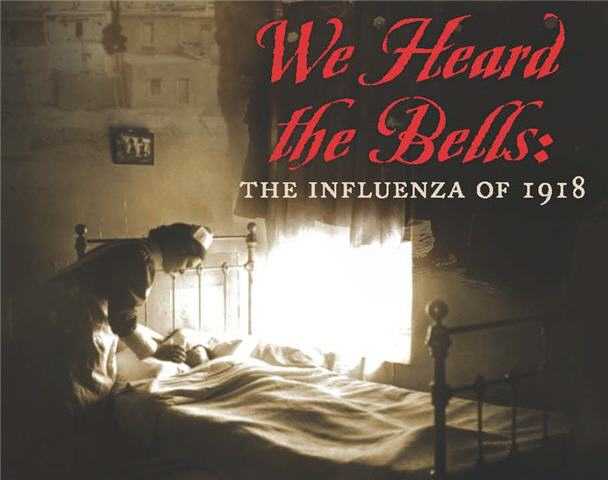Past Pandemics

An influenza pandemic is a global outbreak of a new influenza A virus that is very different from current and recently circulating human seasonal influenza A viruses. Influenza A viruses are constantly changing, making it possible on very rare occasions for non-human influenza viruses to change in such a way that they can infect people easily and spread efficiently from person to person. Read more about pandemics in recent history.
Pandemic Influenza Storybook
2009 H1N1 Pandemic (H1N1pdm09 virus)
In the spring of 2009, a novel influenza A (H1N1) virus emerged. It was detected first in the United States and spread quickly across the United States and the world. This new H1N1 virus contained a unique combination of influenza genes not previously identified in animals or people. This virus was designated as influenza A (H1N1)pdm09 virus. Few young people had any existing immunity (as detected by antibody response) to the (H1N1)pdm09 virus, but nearly one-third of people over the age of 60 years had antibodies against this virus, likely from an exposure to an older H1N1 virus earlier in their lives. The (H1N1)pdm09 virus was very different from H1N1 viruses that were circulating at that time; vaccination with seasonal flu vaccines thus offered little cross-protection against (H1N1)pdm09 virus infection. While a monovalent (H1N1)pdm09 vaccine was produced, it was not available in large quantities until late November, which was after the peak of illness during the second wave had come and gone in the United States. From April 12, 2009 to April 10, 2010, CDC estimated that there were 60.8 million cases (range: 43.3-89.3 million), 274,304 hospitalizations (195,086-402,719), and 12,469 deaths (8868-18,306) in the United States due to the (H1N1)pdm09 virus.* CDC estimated that between 151,700 and 575,400 people worldwide died from 2009 H1N1 virus infection during the first year the virus circulated.** Globally, CDC estimated that 80 percent of (H1N1)pdm09 virus-associated deaths were in people younger than 65 years of age, which differs from typical seasonal influenza epidemics during which about 70 percent to 90 percent of deaths are estimated to occur in people 65 years of age and older.
Though this most recent influenza pandemic primarily affected children and young and middle-aged adults, the impact of (H1N1)pdm09 virus on the global population overall during the first year was less severe than that of previous pandemics. Estimates of pandemic influenza mortality ranged from 0.03 percent of the world’s population during the 1968 H3N2 pandemic to 1 percent to 3 percent of the world’s population during the 1918 H1N1 pandemic. It is estimated that 0.001 percent to 0.007 percent of the world’s population died of respiratory complications associated with the (H1N1)pdm09 virus infection during the first 12 months the virus circulated.
The United States mounted a complex, multi-faceted and long-term response to the pandemic, summarized in “The 2009 H1N1 Pandemic: Summary Highlights, April 2009-April 2010.” On August 10, 2010, WHO declared an end to the global 2009 H1N1 influenza pandemic. However, (H1N1)pdm09 virus continues to circulate as a seasonal influenza virus and cause illness and deaths worldwide every year.
2009 Additional Resources
- Influenza virology and animal transmission studies
- Antigenic and Genetic Characteristics of Swine-Origin 2009 A(H1N1) Influenza Viruses Circulating in Humans [327 MB, 7 Pages]
- Cross-Reactive Antibody Responses to the 2009 Pandemic H1N1 Influenza Virus
- 2009 Pandemic Influenza A (H1N1): Pathology and Pathogenesis of 100 Fatal Cases in the United States
- Cytokine and Chemokine Profiles in Lung Tissues from Fatal Cases of 2009 Pandemic Influenza A (H1N1): Role of the Host Immune Response in Pathogenesis
- Transmission and Pathogenesis of Swine-Origin 2009 A(H1N1) Influenza Viruses in Ferrets and Mice
- Epidemiological and Clinical Studies
- The 2009 H1N1 Influenza Pandemic: Field and Epidemiologic Investigations
- Emergence of a Novel Swine-Origin Influenza A (H1N1) Virus in Humans
- Emergence of a Novel Swine-Origin Influenza A (H1N1) Virus in Humans (Laboratory Supplemental) [4.2 MB, 8 Pages]
- Hospitalized Patients with 2009 H1N1 Influenza in the United States, April–June 2009
- Hospitalized Patients with 2009 H1N1 Influenza in the United States, April–June 2009 (Supplemental) [140 KB, 9 Pages]
- Clinical Aspects of Pandemic 2009 Influenza A (H1N1) Virus Infection
- Clinical Aspects of Pandemic 2009 Influenza A (H1N1) Virus Infection (Supplemental) [262 KB, 53 Pages]
- Global mortality estimates for the 2009 Influenza Pandemic from the GLaMOR project: a modeling study
- Pandemic Preparedness and Response —Lessons from the H1N1 Influenza of 2009
- *Estimating the burden of 2009 pandemic influenza A (H1N1) in the United States (April 2009-April 2010).
- **Estimated global mortality associated with the first 12 months of 2009 pandemic influenza A H1N1 virus circulation: a modelling study:
- Dawood FS, Iuliano AD, Reed C, Meltzer MI, Shay DK, Cheng PY, Bandaranayake D, Breiman RF, Brooks WA, Buchy P, Feikin DR, Fowler KB, Gordon A, Hien NT, Horby P, Huang QS, Katz MA, Krishnan A, Lal R, Montgomery JM, Mølbak K, Pebody R, Presanis AM, Razuri H, Steens A, Tinoco YO, Wallinga J, Yu H, Vong S, Bresee J, Widdowson MA.Estimated global mortality associated with the first 12 months of 2009 pandemic influenza A H1N1 virus circulation: a modelling study. Lancet Infect Dis. 2012 Sep;12(9):687-95.
- Shrestha SS, Swerdlow DL, Borse RH, Prabhu VS, Finelli L, Atkins CY, Owusu-Edusei K, Bell B, Mead PS, Biggerstaff M, Brammer L, Davidson H, Jernigan D, Jhung MA, Kamimoto LA, Merlin TL, Nowell M, Redd SC, Reed C, Schuchat A, Meltzer MI. Estimating the burden of 2009 pandemic influenza A (H1N1) in the United States (April 2009-April 2010). Clin Infect Dis. 2011 Jan 1;52 Suppl 1:S75-82.
1968 Pandemic (H3N2 virus)
The 1968 pandemic was caused by an influenza A (H3N2) virus comprised of two genes from an avian influenza A virus, including a new H3 hemagglutinin, but also contained the N2 neuraminidase from the 1957 H2N2 virus. It was first noted in the United States in September 1968. The estimated number of deaths was 1 million worldwide and about 100,000 in the United States. Most excess deaths were in people 65 years and older. The H3N2 virus continues to circulate worldwide as a seasonal influenza A virus. Seasonal H3N2 viruses, which are associated with severe illness in older people, undergo regular antigenic drift.
1968 Additional Resources
- Glezen WP. Emerging infections: pandemic influenza. Epidemiol Rev. 1996;18(1):64-76.
- Kilbourne ED. Influenza pandemics of the 20th century. Emerg Infect Dis. 2006 Jan;12(1):9-14.
- Simonsen L, Clarke MJ, Schonberger LB, Arden NH, Cox NJ, Fukuda K. Pandemic versus epidemic influenza mortality: a pattern of changing age distribution. J Infect Dis. 1998 Jul;178(1):53-60.
- Viboud C, Grais RF, Lafont BA, Miller MA, Simonsen L; Multinational Influenza Seasonal Mortality Study Group. Multinational impact of the 1968 Hong Kong influenza pandemic: evidence for a smoldering pandemic. J Infect Dis. 2005 Jul 15;192(2):233-48.
1957-1958 Pandemic (H2N2 virus)
In February 1957, a new influenza A (H2N2) virus emerged in East Asia, triggering a pandemic (“Asian Flu”). This H2N2 virus was comprised of three different genes from an H2N2 virus that originated from an avian influenza A virus, including the H2 hemagglutinin and the N2 neuraminidase genes. It was first reported in Singapore in February 1957, Hong Kong in April 1957, and in coastal cities in the United States in summer 1957. The estimated number of deaths was 1.1 million worldwide and 116,000 in the United States.
1957 Additional Resources
- Glezen WP. Emerging infections: pandemic influenza. Epidemiol Rev. 1996;18(1):64-76.
- Kilbourne ED. Influenza pandemics of the 20th century. Emerg Infect Dis. 2006 Jan;12(1):9-14.
- Langmuir AD Epidemiology of Asian influenza, international conference on Asian influenza. Am Rev Respir Dis. 1961;83:2–14
- Viboud C, Simonsen L, Fuentes R, Flores J, Miller MA, Chowell G. Global Mortality Impact of the 1957-1959 Influenza Pandemic. J Infect Dis. 2016 Mar 1;213(5):738-45.
1918 Pandemic (H1N1 virus)

The 1918 influenza pandemic was the most severe pandemic in recent history. It was caused by an H1N1 virus with genes of avian origin. Although there is not universal consensus regarding where the virus originated, it spread worldwide during 1918-1919. In the United States, it was first identified in military personnel in spring 1918. It is estimated that about 500 million people or one-third of the world’s population became infected with this virus. The number of deaths was estimated to be at least 50 million worldwide with about 675,000 occurring in the United States. Mortality was high in people younger than 5 years old, 20-40 years old, and 65 years and older. The high mortality in healthy people, including those in the 20-40 year age group, was a unique feature of this pandemic. While the 1918 H1N1 virus has been synthesized and evaluated, the properties that made it so devastating are not well understood. With no vaccine to protect against influenza infection and no antibiotics to treat secondary bacterial infections that can be associated with influenza infections, control efforts worldwide were limited to non-pharmaceutical interventions such as isolation, quarantine, good personal hygiene, use of disinfectants, and limitations of public gatherings, which were applied unevenly.
1918 Additional Resources
- Pandemic Influenza Storybook
- The Deadly Virus: The Influenza Epidemic of 1918
- Pandemic Influenza—Past, Present, Future: Communicating Today Based on the Lessons from the 1918-1919 Influenza Pandemic [1.72 MB, 47 Pages]
- The American Experience: Influenza 1918
- Influenza of 1918 (Spanish Flu) and the U.S. Navy
- Glezen WP. Emerging infections: pandemic influenza. Epidemiol Rev. 1996;18(1):64-76.
- Kilbourne ED. Influenza pandemics of the 20th century. Emerg Infect Dis. 2006 Jan;12(1):9-14.
- Taubenberger JK, Morens DM 1918 influenza: the mother of all pandemics. Emerg Infect Dis. 2006;12:15–22
- Page last reviewed: September 22, 2017
- Page last updated: September 22, 2017
- Content source:
- Centers for Disease Control and Prevention, National Center for Immunization and Respiratory Diseases (NCIRD)
- Page maintained by: Office of the Associate Director for Communication, Digital Media Branch, Division of Public Affairs


 ShareCompartir
ShareCompartir
